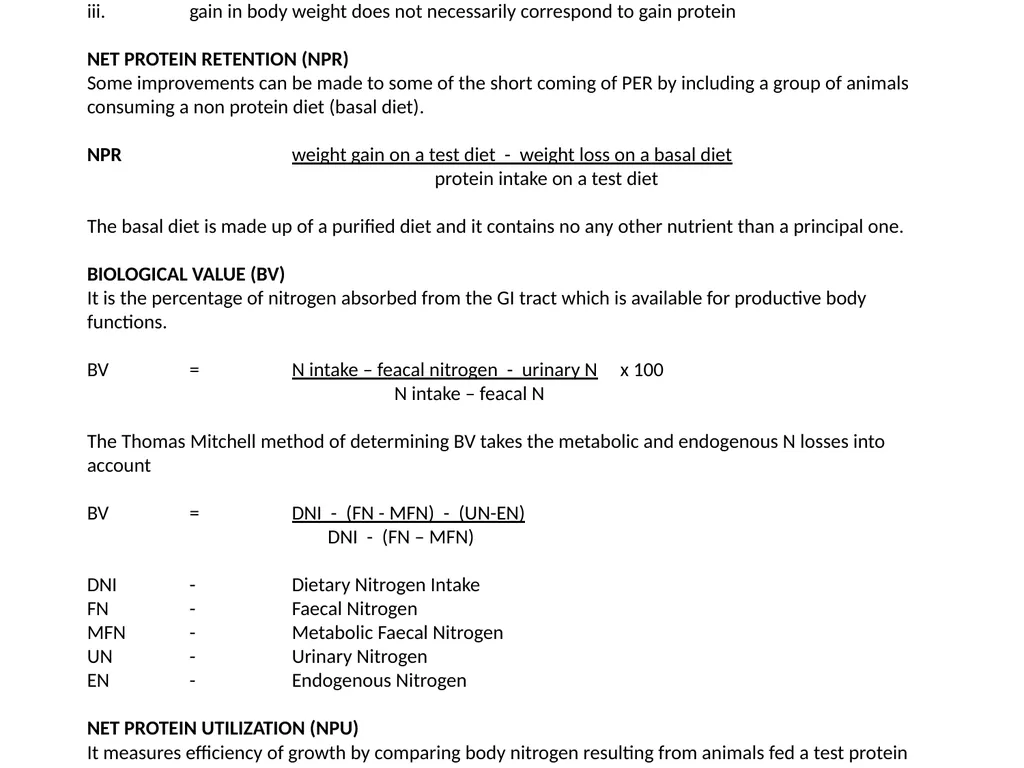Lecture 12 PROTEIN QUALITY AND EVALUATION OF FEED
Author : lindy-dunigan | Published Date : 2025-05-13
Description: Lecture 12 PROTEIN QUALITY AND EVALUATION OF FEED STUFFS BIOLOGICAL EFFICIENCY OF A DIETARY PROTEIN It depends not only on the balance of available amino acids but also in the nitrogen and energy intake nutrient digestibility the species
Presentation Embed Code
Download Presentation
Download
Presentation The PPT/PDF document
"Lecture 12 PROTEIN QUALITY AND EVALUATION OF FEED" is the property of its rightful owner.
Permission is granted to download and print the materials on this website for personal, non-commercial use only,
and to display it on your personal computer provided you do not modify the materials and that you retain all
copyright notices contained in the materials. By downloading content from our website, you accept the terms of
this agreement.
Transcript:Lecture 12 PROTEIN QUALITY AND EVALUATION OF FEED:
Lecture 12 PROTEIN QUALITY AND EVALUATION OF FEED STUFFS BIOLOGICAL EFFICIENCY OF A DIETARY PROTEIN It depends not only on the balance of available amino acids but also in the nitrogen and energy intake nutrient digestibility, the species and physiological stage of the animals. The biological efficiency is also affected by the presence or absence of bacteria or fungi toxins, the rancidity of the associated fat, the content of vitamins, minerals and other essential nutrients that accompany it in a diet. Effect of physiological status of animals on protein utilization; Animal in a growing phase are able to utilize protein better than adult animals. Pregnancy and lactation also improve protein utilization while infection, emotion and injury reduce the utilization efficiency of protein. METHODS OF EVALUATION OF PROTIEN QUALITY PROTEIN EFFICIENCY RATIO (PER) It expresses numerically the growth promoting value of protein. It involves using weight of protein intake in a test diet to divide the weight gain by animal on the test diet. It is assumed that the primary function of a dietary protein is to furnish a mixture of amino acid in a proper pattern for the synthesis of tissue protein. PER have a high correlation (r = 0.736) with biological value. However, despite its long history and wide usage, PER may not be a very good assay procedure based on the following facts; i. the results are influenced by the level of protein consumed. ii. no allowance is made for the quantity of protein used for maintenance iii. gain in body weight does not necessarily correspond to gain protein NET PROTEIN RETENTION (NPR) Some improvements can be made to some of the short coming of PER by including a group of animals consuming a non protein diet (basal diet). NPR weight gain on a test diet - weight loss on a basal diet protein intake on a test diet The basal diet is made up of a purified diet and it contains no any other nutrient than a principal one. BIOLOGICAL VALUE (BV) It is the percentage of nitrogen absorbed from the GI tract which is available for productive body functions. BV = N intake – feacal nitrogen - urinary N x 100 N intake – feacal N The Thomas Mitchell method of determining BV takes the metabolic and endogenous N losses into account BV = DNI - (FN - MFN) - (UN-EN) DNI - (FN – MFN)














